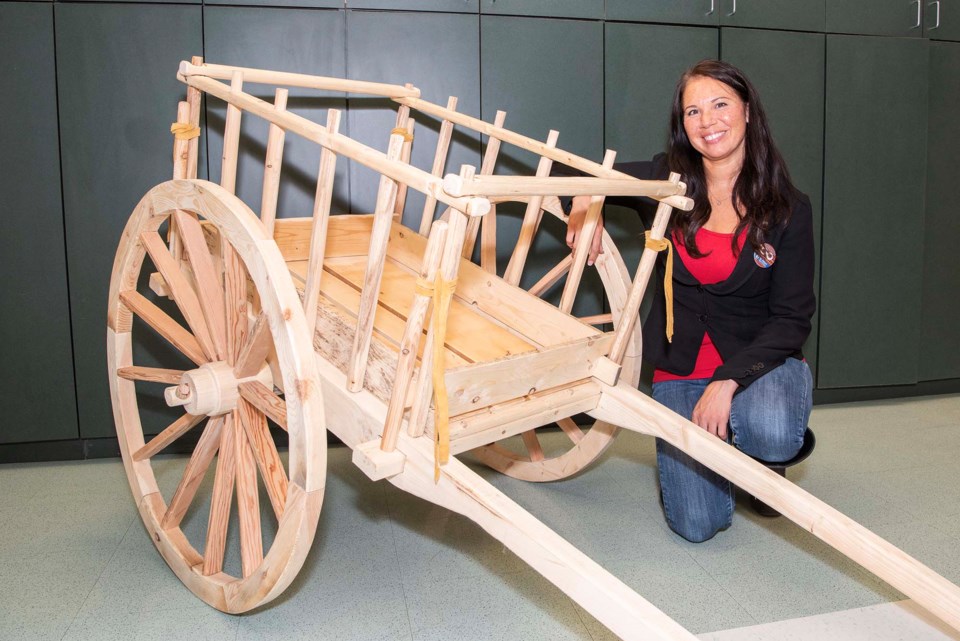Sir Alexander Mackenzie students will get to ride through history this week as St. Albert Public Schools unveils its new Red River cart.
SAM School students will be the first in St. Albert this June 20 to get hands-on with a Red River cart recently acquired by the St. Albert Public school district. The cart’s rollout corresponds with the lead-up to National Indigenous Peoples Day on June 21.
Amy Watson, the district’s Indigenous education facilitator, said she asked Saskatchewan artist Garry Patterson to make this half-sized cart to help teach students about Métis history and other subjects. The cart arrived at district office in late May.
“It’s a really strong symbol of Métis heritage,” Watson said, one she felt deserved more attention in St. Albert.
Tradition in transport
Red River carts are two-wheeled wooden conveyances commonly used to haul people and cargo across the Prairies in the mid-to-late 1800s, the Canadian Encyclopedia reports. They are strongly linked to the Métis, so much so that some First Nations residents at the time called the Métis “half wagon, half man.”
Watson said she asked Patterson to make a half-sized cart for ease of handling — a full-sized one would be the size of a truck. Like all traditional Red River carts, this one is made almost entirely out of wood held together with pegs and leather, and can be put together in about 20 minutes — something teachers and students will get to try when the cart visits their school.
“It’s very symbolic of the resourcefulness of the Métis,” Watson said, as it was designed to be fixed in the field using the materials at hand.
Patterson, a retired plumber and carpenter, said he had a lifelong interest in Red River carts stemming from his family’s deep roots in the Métis community. Looking for a hobby during the 2020 pandemic, he started making miniature carts for his relatives out of scrap wood. He now sells them through his daughter’s website.
Patterson said he uses a mix of hand tools and power tools to make his carts, no two of which are alike. He does extensive research on the carts to make them historically accurate.
“One of the big things about Red River carts is the wheel,” he noted — unlike regular wagon wheels, these ones are deeply dished, which lets the spokes act as shock absorbers for the rough Prairie terrain.
Watson said Red River carts were designed to be easy to fix in the field without access to metal or blacksmiths; if you broke an axle, you just chopped down a tree and carved a replacement. They were also very noisy, as the drivers didn’t grease the axles — the squeal of wood-on-wood could be heard kilometres away.
Watson said Patterson added intentional flaws to the district’s cart (one of the arms is more curved than the other, for example) to make it look more authentic. He also carved “In honour of Marie Louise Vandal” into one of the floorboards to honour his mother, who encouraged him to teach others about Métis culture.
Watson said this cart will travel between St. Albert schools this fall for teachers to use in math, history, and transportation lessons. She also planned to get smaller model carts for students to build in groups.
Patterson said he was now building a full-scale Red River cart. He hoped his carts would encourage others to research Métis history.
Questions on the cart should go to Watson at [email protected].




